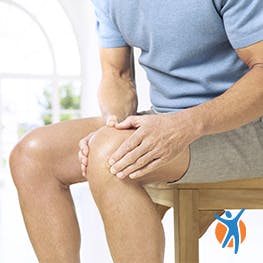
SHARE THIS ARTICLE:
Symptoms of wrist pain
Wrist pain may be experienced in many different ways and can really affect your quality of life.
1. Wrist pain due to injury may stop you from carrying out basic activities such as lifting things, writing, typing, or putting weight on your hand or wrist.
2. Tenderness, inflammation and problems moving wrists and hands freely can also occur in various wrist problems.
3. If your wrist is injured it may appear bruised and swollen and you may have difficulties moving it.

How wrist pain can affect you
Wrist pain can make it difficult to perform activities that require easy movement of your hands and wrist, such as typing or playing the piano.
DID YOU KNOW?
The bones in the wrist include the ends of the radius and ulna (the long bones of the forearm) and eight carpal bones (the bones of the wrist.)*
Globally, 72% of people with pain experience pain in their hands.**
Why do we experience wrist pain?
There are many reasons why you could be experiencing wrist pain, which can make it difficult to diagnose the exact cause of your wrist pain.

Common causes of wrist pain
Wrist pain is often caused by sprains or sprains from injuries, while injury or overuse can also cause tendonitis (inflammation of the tendons) or (where fluid builds up in the sac of fluid that cushions the wrist joints, called the bursa).

Some factors might increase the risk of wrist pain
There are some activities that are more likely to cause wrist pain, including sports that involve lots of wrist movement like bowling or tennis.

Expert treatment
Usually wrist pain does not require medical care and minor sprains and strains respond to ice, rest and over-the-counter pain medications such as non-steroidal anti-inflammatory drugs (NSAIDs). These help reduce the inflammation and alleviate the pain. If the pain and swelling (inflammation) last longer than a few days or it worsens, it is recommended that you visit your doctor to rule out underlying conditions. Your doctor might also suggest wearing a splint or brace or exercises to strengthen the hand and wrist.

Rest your wrist and do not exercise it when it is inflamed; keep it raised above the heart level

Apply ice to the tender, swollen (inflamed) area

Follow advice from your doctor or pharmacist on taking medicines to relieve pain and inflammation

Exercise your wrist to keep it flexible and strong
Health, wellness & your pain
Pain is rarely just physical nor is it always solved by taking medicine alone. Voltaren is your ally in helping you take more control of your pain journey, from the way to sleep, to what you eat, mental wellbeing and complementary pain relief therapies.











